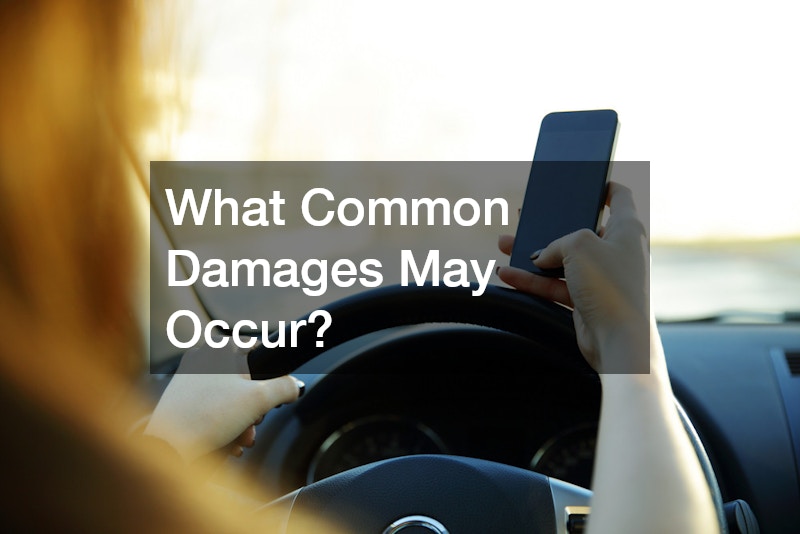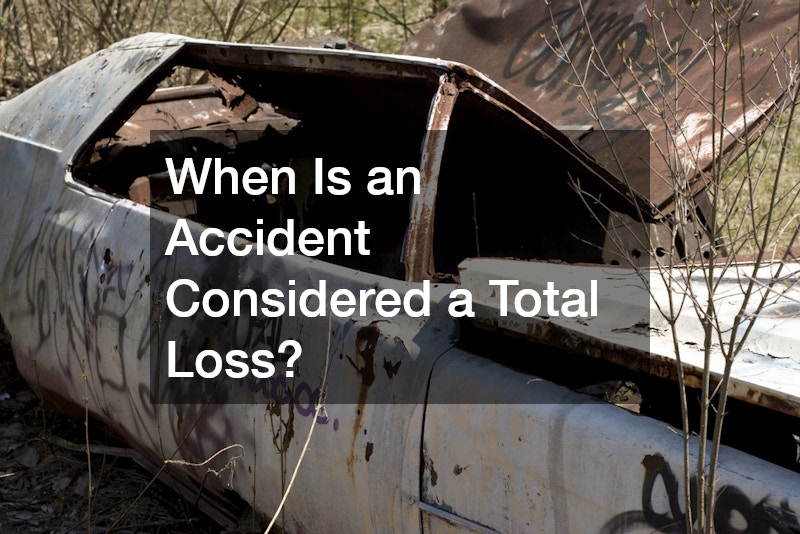A front end accident can cause a significant amount of damage to your vehicle, ranging from minor cosmetic issues to serious mechanical and structural problems. Accurately estimating the damage costs after such an accident is crucial, not only for ensuring that your vehicle is safe to drive but also for handling insurance claims and repair negotiations effectively. Whether you’re dealing with simple tire repair or complex collision repair, understanding how to assess and estimate damages can save you both time and money. In this article, we will explore various facets of estimating damage after a front end accident.
1. What Common Damages May Occur?

In any front end accident, the damages are often concentrated on the front part of the vehicle, affecting both its aesthetic and functional components. The impact can range from minor to severe, depending on the force of the collision, the type of vehicles involved, and the accident’s circumstances.
Damages to the Bumper
The bumper is the first line of defense in a front end collision. It’s designed to absorb impact, but in the process, it often ends up damaged. A cracked or displaced bumper not only looks unsightly but can also lead to additional problems if left unrepaired.
Headlight and Taillight Issues
Front end accidents often lead to broken or misaligned headlights. This can impair visibility, making it unsafe to drive, especially at night or in poor weather conditions. Replacing or repairing headlights is one of the essential steps in post-collision recovery.
Impact on the Radiator and Cooling System
The radiator and cooling system are located near the front of most vehicles, which makes them vulnerable in a front end accident. Damage to these components can lead to overheating issues, requiring immediate attention and possibly an AC repair.
Frame and Structural Damages
A front end accident can bend or twist the car’s frame, resulting in more serious structural damage. This is more common in high-speed collisions but can occur in less severe crashes as well. Frame damage requires a professional auto body repair as it can compromise the integrity of the entire vehicle.
2. How to Assess Front End Damage Yourself?
After a front end accident, it’s natural to want to assess the damage on your own before heading to an auto body shop. While a professional will ultimately need to perform a thorough inspection, there are a few steps you can take to get a general sense of the extent of the damage.
Identifying Visible Damages
Start by examining the exterior of your vehicle. Look for dents, scratches, and cracks, particularly on the bumper, headlights, and hood. Paintless dent removal may be an option for minor dents that haven’t caused any underlying structural damage.
Checking Under the Hood
Open the hood and inspect the engine components for any visible signs of damage. Look for leaking fluids, broken belts, or any loose parts. Be cautious when doing this, as some damages may not be immediately apparent and could worsen over time.
Inspecting the Undercarriage
It’s also important to check the undercarriage of your vehicle, as a front end accident could have caused damage to the suspension or drivetrain. Pay attention to any signs of leakage, bent parts, or wear that could indicate a problem.
Listening for Unusual Sounds
When you start the car, listen carefully for any unusual noises, such as grinding or knocking sounds, which could indicate internal damage. Even if the vehicle appears drivable, strange sounds could signal deeper mechanical issues.
3. What Role Does Insurance Play in Damage Estimation?

Dealing with your auto insurance company after a front end accident can be daunting, but it’s a critical step in getting your vehicle repaired and ensuring that you are fairly compensated.
Filing a Claim After an Accident
The first step is understanding what your auto insurance policy covers. Once you’ve reviewed your policy, the next step is filing a claim. Contact your insurance company as soon as possible after the accident and provide them with all necessary information, including photos of the damage and any repair estimates you’ve gathered.
Insurance Adjuster’s Assessment Process
Your insurer will likely send an adjuster to assess the damage. They will evaluate your vehicle and provide an estimate of the repair costs. It’s essential to have your own repair shop provide an estimate as well, as the insurance adjuster’s estimate may not always reflect the full cost of repairs.
Negotiating with Your Insurer
In some cases, you may need to negotiate with your insurance company if their estimate is lower than expected. Having a repair estimate from a trusted auto body shop can give you leverage during this process.
Common Insurance Pitfalls to Avoid
Be mindful of common pitfalls, such as accepting the first offer from your insurance company or not reading the fine print in your policy. A local lawyer can help if you feel that your insurance company is not handling your claim fairly.
4. How Much Do Repair Costs Typically Vary?
Repair costs after a front end accident can vary significantly based on the severity of the damage, the type of vehicle, and the repair shop you choose.
Factors Affecting Repair Costs
Several factors influence the total repair cost, including labor rates, parts costs, and the extent of the damage. For example, a luxury vehicle will likely cost more to repair than an economy car due to the price of replacement parts.
Labor vs. Parts Cost
Labor costs can make up a significant portion of the repair bill. Depending on the complexity of the repair, labor can sometimes outweigh the cost of parts, especially in cases where frame damage or electronic issues are involved.
Comparing Repair Shop Estimates
It’s a good idea to get estimates from multiple auto body shops. Prices can vary widely depending on the shop’s reputation, location, and level of expertise. Be sure to ask whether the shop specializes in front end accident repairs, as this can impact the quality of the work.
Cost Differences by Vehicle Make and Model
The make and model of your vehicle will play a major role in determining the cost of repairs. A luxury car may require more expensive parts and labor, while repairs for a standard vehicle may be more affordable.
5. When Is an Accident Considered a Total Loss?

In some cases, the cost of repairing a vehicle after a front end accident may exceed its actual cash value, leading your insurance company to declare the vehicle a total loss.
Understanding Total Loss Criteria
A vehicle is generally considered a total loss if the cost to repair it exceeds a certain percentage of its actual cash value (ACV). This percentage varies by state but is typically around 75-80%.
Calculating the Vehicle’s Actual Cash Value
The ACV is the amount your vehicle was worth before the accident. It’s determined by factors like the car’s age, mileage, and condition. If repair costs approach or exceed this value, the vehicle may be considered a total loss.
Factors Contributing to Total Loss Decision
In addition to repair costs, other factors like frame damage or airbag deployment can contribute to a total loss decision. Vehicles with extensive structural damage or malfunctioning safety systems are more likely to be totaled.
Selling a Totaled Car: What Are Your Options?
If your car is declared a total loss, you have a few options. You can accept the settlement from your insurer, buy back the totaled car and repair it yourself, or sell the car for parts. A local lawyer can help you navigate the legal aspects of selling a totaled car.
6. What Safety Concerns May Arise?
Front end accidents can cause damage that compromises the safety of your vehicle, making it essential to address these concerns during the repair process.
Impact on Vehicle Safety Systems
Many of the vehicle’s safety systems, such as the airbag sensors and crumple zones, are located in the front. A front end accident can impair these systems, potentially putting you at risk in future collisions.
Airbag Deployment and Repairs
If the airbags deployed during the accident, they will need to be replaced. Airbag systems are expensive to repair but are crucial for ensuring your vehicle’s safety in future crashes.
Ensuring Proper Realignment of Wheels
A front end accident can throw your vehicle’s alignment out of balance. It’s important to ensure that the wheels are properly realigned to avoid uneven tire wear and steering issues. A local tire repair service can help with this.
Conducting a Post-repair Safety Check
Once your car has been repaired, conduct a thorough safety check to ensure that all systems are functioning properly. This may include testing the brakes, checking the alignment, and ensuring that all lights are working.
7. How Does an Accident Affect Vehicle Value?

Even after repairs, a front end accident can significantly affect the value of your vehicle, impacting both its resale and trade-in potential.
Assessing Depreciation After Repairs
Vehicles that have been in accidents tend to depreciate more quickly than those that haven’t. While the severity of the accident and the quality of repairs play a role, expect some level of value loss after an accident.
Effect on Resale and Trade-in Value
Most buyers will offer less for a vehicle that has been in a front end accident, even if it has been fully repaired. Be prepared for this depreciation when selling or trading in your vehicle.
Documenting Accident Repairs for Future Buyers
If you plan to sell the car in the future, keep detailed records of the repairs that were made. Providing potential buyers with this information can help reassure them that the car was repaired properly.
Strategies to Minimize Value Loss
One way to minimize value loss is to invest in high-quality repairs using OEM parts. Ensuring that all damage is properly documented and repaired can help maintain the vehicle’s value.
The Role of VIN History Reports
VIN history reports provide a record of any accidents or repairs a vehicle has undergone. After a front end accident, your vehicle’s VIN report will show that it was involved in a collision, which can affect its resale value.
8. How Can Technology Assist in Damage Estimation?
Advancements in technology have made it easier to estimate damage after a front end accident, providing more accurate assessments and speeding up the repair process.
Using Mobile Apps for Damage Assessment
Several mobile apps allow drivers to take photos of their vehicle and receive an estimate of the damage. While these tools are convenient, they should not replace a professional assessment.
The Role of Computerized Estimation Tools
Many auto body shops now use computerized tools to assess damage. These tools can provide more accurate estimates by analyzing data from previous repairs and comparing it to the damage on your vehicle.
Advanced Diagnostic Systems
Modern vehicles are equipped with advanced diagnostic systems that can alert mechanics to problems that may not be visible to the naked eye. This helps ensure that all damage is properly addressed during repairs.
Future Innovations in Estimation Technology
As technology continues to evolve, we can expect to see even more advancements in damage estimation. Artificial intelligence and machine learning could play a larger role in helping drivers and repair shops accurately assess vehicle damage after an accident.
9. What Steps Should You Take Immediately After the Accident?
The actions you take immediately after an accident can have a significant impact on the outcome of your insurance claim and the repair process.
Documenting the Scene and Damage
Take photos of the accident scene and any visible damage to your vehicle. This documentation will be crucial when filing your insurance claim and negotiating with your insurer.
Contacting Relevant Authorities and Insurance Providers
Report the accident to the police, especially if there are injuries or significant property damage. Afterward, contact your auto insurance company to begin the claims process.
Gathering Eyewitness Accounts
If there are any witnesses to the accident, gather their contact information and ask for a brief statement of what they saw. This can be helpful in case there are any disputes over fault.
Tracking Costs and Keeping Repair Receipts
Keep detailed records of all costs associated with the accident, including towing fees, repair receipts, and any medical expenses. This information will be essential for your insurance claim and when dealing with local windshield repairs.
In conclusion, estimating damage costs after a front end accident requires careful consideration of multiple factors, from visible damage to the intricacies of insurance claims and repair shop estimates. Understanding how to navigate this process can make a significant difference in how quickly your vehicle is repaired and how much it costs.
